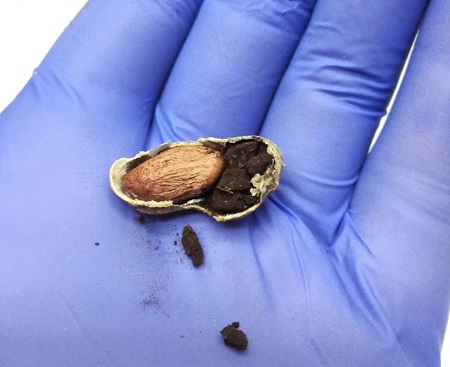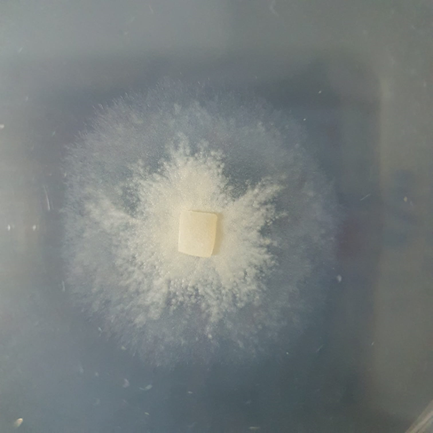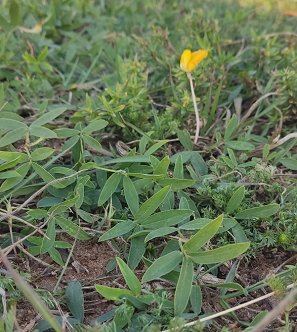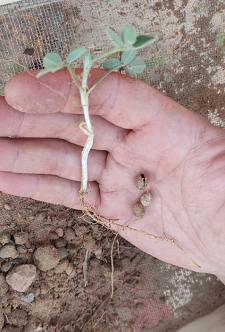Exploring the Diversity of the Peanut Smut in its Native Range
By Mariano Maestro and Guillermo Cabrera Walsh, Foundation for the Study of Invasive Species (FuEDEI)
The peanut smut, Thecaphora frezzii, is a soil-borne fungus that affects peanut production. The fungus causes damage ranging from the abnormal development of pods and seeds to the complete replacement of seeds by a sooty mass of spores (Fig. 1). These spores are later released in the soil, where they remain dormant until they germinate to infect a new plant. Peanut smut is currently the most damaging and prevalent disease of peanut in Argentina, one of the top peanut exporters in the world. The fungus is of great concern to the USDA-ARS, because of the danger of the disease being introduced into North America.
At present, management strategies of the disease include crop rotation (mostly with maize), deep ploughing to bury the spores deeper into the ground, and treatment of the seeds with fungicides to reduce initial inoculum. These strategies, however, have drawbacks of their own. Few disease-resistant cultivars currently exist, and it is not clear how many “races” of peanut smut – often called pathotypes – exist, and if the resistant peanut cultivars will provide protection from all of them.
Researchers from the Foundation for the Study of Invasive Species (FuEDEI), with support from Mars Wrigley, are working in cooperation with Drs. Kelly Chamberlin and Rebecca Bennett from the USDA-ARS Peanut and Small Grains Research Unit, OK, and Rachel Koch Bach, from the USDA-ARS Foreign Disease-Weed Science Research Unit, to cultivate (Fig. 2) and identify the different pathotypes of peanut smut in South America. We are collecting cultivated peanuts in different peanut-producing regions in Argentina, as well as wild peanuts (Fig. 3), in order to sample the diversity of smuts in the area of origin of the crop (northern Argentina, Bolivia, and Paraguay).
 Figure 1. Open pod showing one relatively healthy seed, and one completely obliterated by peanut smut.
Figure 1. Open pod showing one relatively healthy seed, and one completely obliterated by peanut smut.
 Figure 2. Pure culture of peanut smut on an enriched growth medium (x20).
Figure 2. Pure culture of peanut smut on an enriched growth medium (x20).


Figure 3. left, flowering wild peanut in the field; right, sifting soil to collect wild peanuts in the field.
Contact: Mariano Maestro
The Foundation for the Study of Invasive Species (FuEDEI), formerly known as the South American Biological Control Laboratory (SABCL), is located in Hurlingham, Argentina, near Buenos Aires. The SABCL/FuEDEI plays a crucial role collecting and providing candidate biological control agents for South American weeds and pest insects for federal and state cooperators, several U.S. universities, and research collaborators worldwide since 1962. FuEDEI’ s main mission includes exploring for natural enemies of target insects and weeds in Argentina and neighboring countries and conducting host-specificity testing to determine their safety for eventual release in the U.S. In addition, complementary research that investigates the ecology, behavior, taxonomy, and genetic differences based on geographic distribution is conducted on both targets and potential agents. Performing these studies in the region of origin of the target pest serves as an efficient prescreening process that reduces the number of biocontrol agent candidates shipped. This reduces the amount of quarantine work and valuable quarantine space occupation, the expenses related to permitting processes, the risks of escapes, and the release of maladapted or wrongly identified agents to a minimum, saving in costs and hazards. On some occasions these complementary studies help us understand why an exotic organism becomes invasive, which can, in turn, lead to determining novel strategies for their management.
